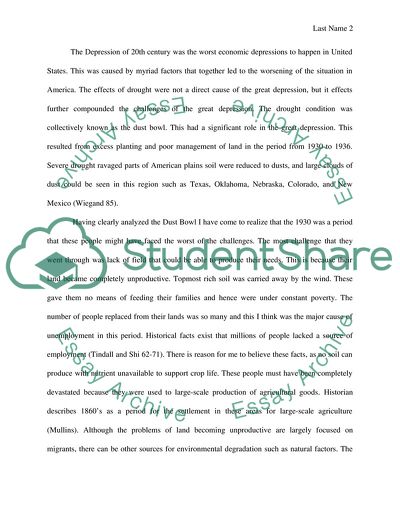Cite this document
(The Great Depression and Dust Bowl Migrants Essay Example | Topics and Well Written Essays - 2000 words, n.d.)
The Great Depression and Dust Bowl Migrants Essay Example | Topics and Well Written Essays - 2000 words. https://studentshare.org/history/1776210-the-great-depression-and-dust-bowl-migrants
The Great Depression and Dust Bowl Migrants Essay Example | Topics and Well Written Essays - 2000 words. https://studentshare.org/history/1776210-the-great-depression-and-dust-bowl-migrants
(The Great Depression and Dust Bowl Migrants Essay Example | Topics and Well Written Essays - 2000 Words)
The Great Depression and Dust Bowl Migrants Essay Example | Topics and Well Written Essays - 2000 Words. https://studentshare.org/history/1776210-the-great-depression-and-dust-bowl-migrants.
The Great Depression and Dust Bowl Migrants Essay Example | Topics and Well Written Essays - 2000 Words. https://studentshare.org/history/1776210-the-great-depression-and-dust-bowl-migrants.
“The Great Depression and Dust Bowl Migrants Essay Example | Topics and Well Written Essays - 2000 Words”. https://studentshare.org/history/1776210-the-great-depression-and-dust-bowl-migrants.


